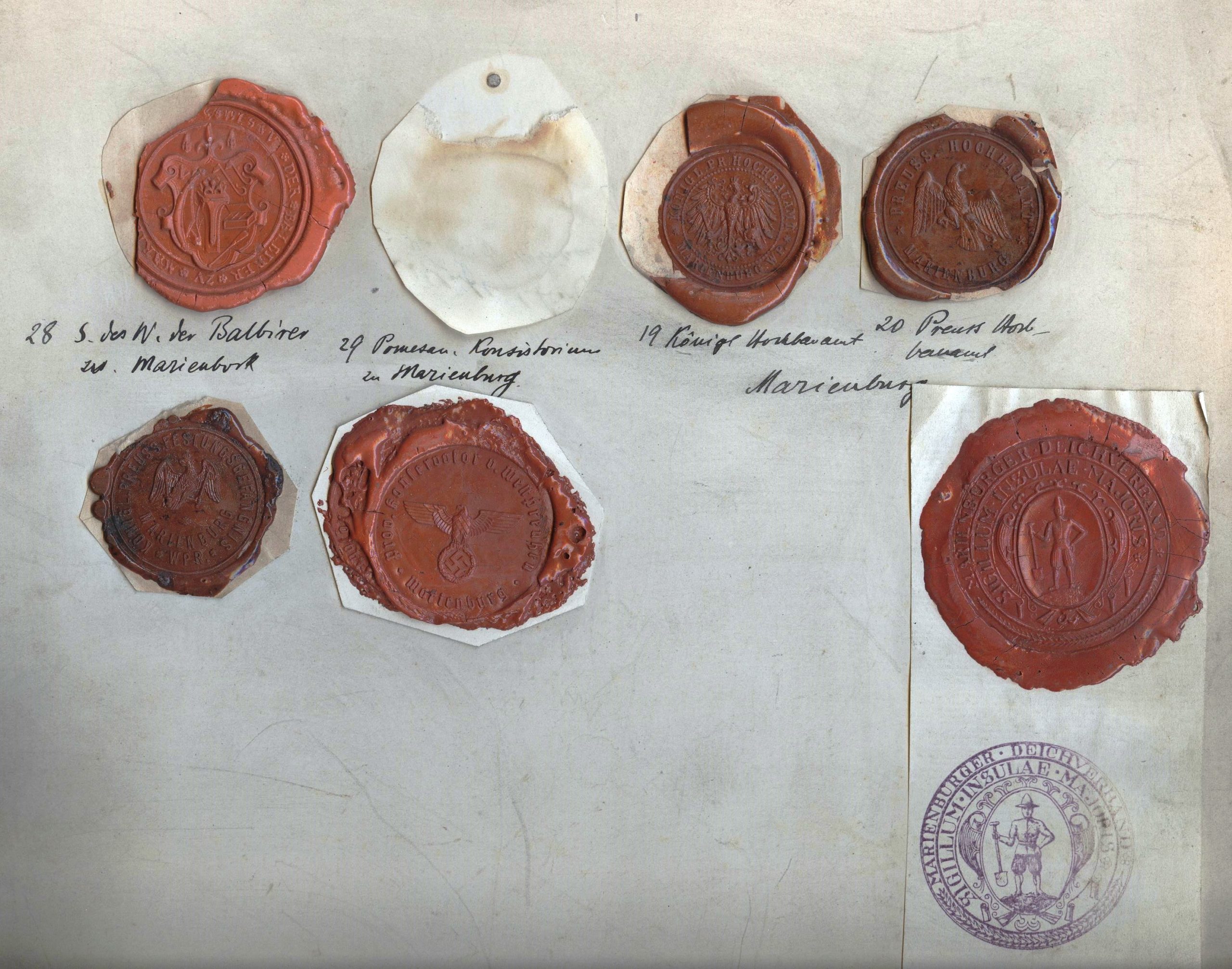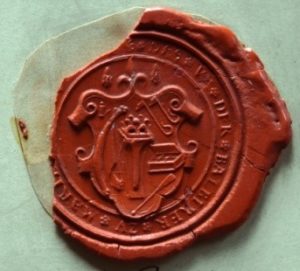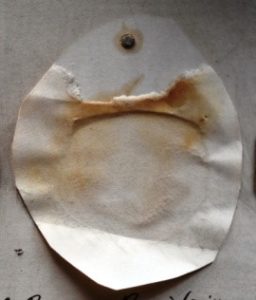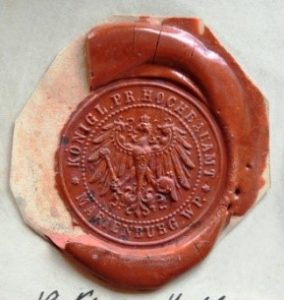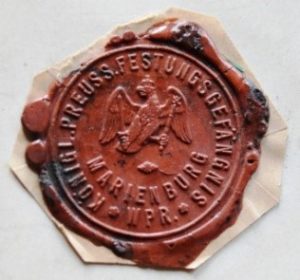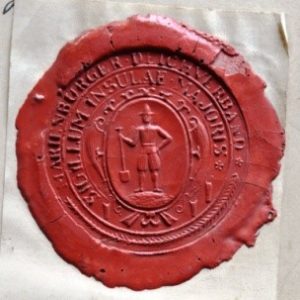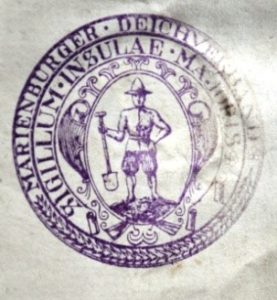In the collection of Historical Documentation (an auxiliary inventory of the collection) there is a cardboard board (dimensions 25.7 x 30.2 cm) with original eight stamps imprinted in lacquer and ink on thin paper (one has fallen off). Seven of them were imprinted in red lacquer, one in purple ink. Four placed in a row, under the top of the cardboard box, including the vacant ones, were numbered and marked with a handwritten entry, most likely by Bernhard Schmid. The remaining four, due to the fact that they were not signed, seem to have been added later to this list.
All prints were placed on thin paper glued to the cardboard. They were cut into irregular polygons, only the last two prints were placed together on paper cut into a vertical rectangle.
The paper with the missing print on the reverse was described in the same handwriting and probably with the same text as in the signature. On the reverse of the cardboard, in the upper left corner, the consecutive number was written in light blue ink, evidently assigned after 1945 – 110 / I Malb. This entry allows for the expression of the belief that it is a remnant of a larger number of boards, which in turn belonged to the pre-war collection of modern sphragistics. This collection consisted of such boards as the one described above, on which there were no less than 487 prints and at least a few copies of pistons and stamps.
At present, we do not know the place of storage of the plates, which, as they should be taken, were inventoried (the mentioned inventory entry on the reverse) and handed over to an institution unknown to us today (perhaps one of the State Archives?). Information collected in recent years indicates that the seal pistons have been dispersed and entered the trade and collector circulation. For example, a piston with a drawing and content identical to the imprint number 8 (see below), but not the same as the piston presented (subtle differences in the arrangement of letters and diameter), is in a private collection in Canada. The piston of the Reconstruction Board, from 1919–1935, was offered to the Castle Museum for purchase by an antiquarian dealer from Trójmiasto at the beginning of this year. Years ago, the museum also acquired a crowd of the Malbork bakers’ guild from 1631 from the antiquarian trade. Unfortunately, we do not have the source confirmation that these three artifacts belonged to the old sphragistic collection, which was classified in the collection section marked with the letter I before the war, but their official provenance in Malbork does not allow them to be located anywhere else except the Malbork collection.
(by B. Butryn)
Seal description /
diameter to the edge of the outer rim
(without the allowance of the squeezed wax)
Legend inscription
Sequence number and signature on the carton
Sequence number and signature on the carton
1. Guild of Malbork hairdressers
Ø 4 cm
*DES* V[…]. *DER * BALBIRER * ZU * MARI[…]
28 S. des W. der Balbier zu Marienburk
3. Królewski pruski wyższy urząd budowlany w Malborku
[lata 1890−1918]
Ø 3,1 cm
* KÖNIGL. PR. HOCHBAUAMT * MARIENBURG W P
19 Königl Hochbauamt Marienburg
4. Pruski wyższy urząd budowlany w Malborku
[lata 1920−1935]
Ø 3,3 cm
* PREUSS. HOCHBAUAMT * MARIENBURG
20 Preuss Hochbauamt Marienburg
5. Królewskie pruskie więzienie wojskowe w Malborku
[lata 1860−1870]
Ø 3,1 cm
KÖNIGL. PREUSS. FESTUNGSGEFANGNIS MARIENBURG WPR.
brak
6. Konserwator zabytków prowincji Prusy Zachodnie w Malborku
[lata 1935−1945]
Ø 3,6 cm
Prov. Konservator v. Westpreußen Marienburg
brak
7. Malborski związek wałowy
[2 poł. XIX w.]
Ø 4,4 cm
MARIENBURGER DEICHVERBAND
SIGILLUM INSULAE MAJORIS
brak
8. Malborski związek wałowy
[pocz. XX w.]
Ø 4,4 cm
MARIENBURGER DEICHVERBAND
SIGILLUM INSULAE MAJORIS
brak
